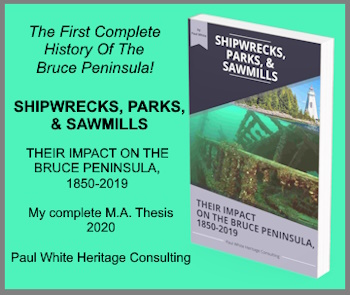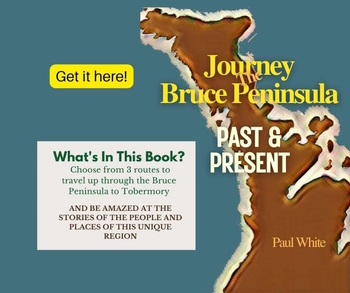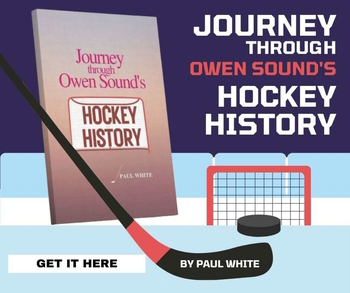Great Lakes Fishing History
Great Lakes fishing history is not without its controversy. The impact of the fishing industry was such that it played an important role in the development of Georgian Bay and Lake Huron shoreline communities. It should also be noted the magnitude of this impact was not limited to just the Georgian Bay/Lake Huron region of the Great Lakes.
Great Lakes Fishing History:
The Fishing Act of 1857
In 1857, the colonial government passed the Fishing Act, which “shifted the commercial fishery from a public right to one vested in the crown.” In 1859, William Gibbard, who 14 years earlier, had supervised the initial settlement of Meaford was named to oversee the industry on Lake Huron, Georgian Bay, and Lake Superior.
Gibbard, not unlike other government officials of that era, ignored the Indigenous peoples’ demands to continue their traditional ways in terms of catching fish. He issued licenses without their consent, believing that they were better off “attending to their farms instead of dabbling in the fisheries”. His actions almost precipitated violence in the region.
A study of Great Lakes fishing history reveals that in the 1860s the area's commercial fishing industry was booming. The American civil war created a huge demand for fish in that market. In response to this market upswing, 800 to 1200 barrels of fish were being shipped by rail from Collingwood in the mid-1860s.
The growth of the Canadian and American markets meant an increased demand for fresh and salted fish. This had a huge impact on the Georgian Bay fishing industry. Whitefish was the most popular species in the Canadian market. Ninety-two percent of the fish taken from Georgian Bay were either Whitefish or Lake Trout. In 1883 fishermen harvested one million pounds of Whitefish and by 1891, due to increased market demand, that total had climbed to 1.8 million pounds, which was 25% of the entire whitefish catch in the province of Ontario!
In 1891 southern Georgian Bay fishing interests caught a total 4.6 million pounds of fish. The north channel fisheries reaped a harvest which totaled almost 3.6 million pounds that year. While Lake Trout and Whitefish made up a large part of these amounts, Pickerel and Sturgeon, which were shipped almost exclusively to the United States, also proved to be an important product for fishermen.
To facilitate the demands of the markets the Georgian Bay/Lake Huron fishing industry experienced immense growth and change during the 1880s and 90s. Steam tugs had been introduced into the industry in the 1870s to meet the demands of the growing market. By 1884 there were 7 of these vessels in operation on Georgian Bay. But, by 1893 that number had more than doubled to 18. In 1883 there were 107 fishing boats in the area, excluding tugs, and more than 200 men involved in an industry that was worth more than $70,000 annually.
Perhaps the most significant statistic in the Great Lakes fishing history that reflects the phenomenal growth in the fishery relates to the use of gill nets. In 1889, 22,000 fathoms of gill netting was in use. Four years later in 1893 that number had soared to 675,000 fathoms!
The Georgian Bay fishery continued to boom well into this century. During the last half of the 1900s and the early 2000's its impact became less significant. However, it is probably safe to suggest that the commercial fishing industry was an important part of the early growth of this region.
A version of this article appeared in my Local History column in the Owen Sound Sun Times.
Georgian Bay Shipping
List of Lighthouses on the Great Lakes: If you have names and/or pictures of Great Lakes Lighthouses please submit them along with details of their location.
Georgian Bay Ships: A List of all the ships that sailed on Georgian Bay until the 1960s. This list is not complete. If you know of a ship that sailed the waters of Georgian Bay please contact me with information about that vessel, and, if you have a picture that I could post with it, that would be much appreciated.
1885: A Memorable Summer Job for Owen Sound teenage boys on the Great Lakes would have historic importance, not mention a possible exciting career opportunity.
Hindman Transportation Company was a well-known Great Lakes shipping company for many years. Here you will find pictures of many of the Hindman ships
Owen Sound Harbour – A Photographic History, by Robert A. Cotton is a book that interests my historiographical curiosity.
Commercial Great Lakes Fishing It is probably safe to suggest that the commercial fishing industry was an important part of the early growth of this region.
A Georgian Bay fishing vacation has long been a popular attraction in the Bruce Peninsula region. During fishing derbies, the regional waterways are dotted with fishing boats of all shapes and sizes.
The Georgian Bay Mackinaw, designed by William Watts of Collingwood is an example of a Georgian Bay innovator creating a vessel to service the needs local mariners.
Great Lakes fishing is an asset that is protected and developed, not only for its economic potential but also for those who just enjoy spending a day by the side of a river or in small fishing boats trying to catch “the big one”!
Great Lakes Fishing History is not without its controversy. The impact of the fishing industry was such that it played an important role in the development of communities along the Georgian Bay and Lake Huron shoreline.
Georgian Bay Travel Before the Winter Freeze-Up could be a dangerous time for mariners in the early years in this region.
A Harbinger of Spring on the Great Lakes in pioneer times, was the eagerly awaited news that a lighthouse had been lit and shipping traffic could begin sailing from port to port.
Lumber Hookers Lumber hookers and tugs were an important innovation to improve the transportation of lumber on Georgian Bay.
Mapmakers on Georgian Bay were also explorers. They mapped the Georgina Bay shoreline noting safe harbours, dangerous reefs and other guides for sailors and pioneer settlers looking for a place to call home.
Paddling Georgian Bay & Pondering: traversing parts of this great waterway in a canoe leads one to wonder about the ships of a bygone era battling the rough seas they encountered.
Parry Sound Shipping History: The Parry Sound area has always been connected to the southern regions of the Province of Ontario by a system of good roads. Or has it?
Parry Sound’s shipping history 2 is more than the tragic sinking of the Waubuno or the later catastrophe surrounding the sinking of the Asia.
Sailing Season Closing: A Frantic Time on Peninsula as ships raced from port to port delivering and picking up passengers and produce before the waterways froze.
Ship Captain Andrew Port was not only a dynamic and brave Georgian Bay mariner, he was a personal favourite historical character of mine.
Ships Stuck in Ice: The Oak Glen was icebound in 1996 but this sailing hazard has been impacting vessels on Georgian Bay since the beginning of time.
Lake Huron shipwrecks, the Hibou often occurred in the Georgian Bay region of that Great Lake due to the often violent waters that could strike unsuspecting vessels like the Hibou.
Shipwrecks: The "Asia" wrecked off the eastern coast of Georgian Bay taking all but two of the more than 100 passengers to a watery grave.
Masters, Mates, and Pilots Association created its first Canadian chapter on Georgian Bay, providing maritime safety education, and other seafaring issues to better inform its membership.
Pioneer Travel Aboard the Fly Tells the story of a sailing vessel as the tenuous link between survival and death in a pioneer settlement in the 1840's in Upper Canada.
Sailing Stories: the Captain Who Smelled his way into Port The Captain Who Smelled his Way into Port details how pioneer seamen on Georgian Bay safely sailed the rough waters without the aid of the modern technological tools so readily used by today's mariners.
Sailing Story: The Voyage of the Prince Alfred the incredible voyage of the Prince Alfred, fraught with danger for both vessel and the crew in the winter of 1880.
Shipbuilding As the southern Georgian Bay region became more populated shipping traffic increased to meet the needs of an expanding market place.
The Summer of 1844 was No Picnic for the early settlers in the pioneer area near what would become Owen Sound on Georgian Bay.
The CPR Grain Elevator Fire of 1911 spelled the end of Owen Sound's role as the eastern terminus of the CPR Great Lakes Fleet.
Georgian Bay shipping occurred long before the first Europeans paddled these waters. But the fur and timber trades opened Georgian Bay to shipping in a big way!





